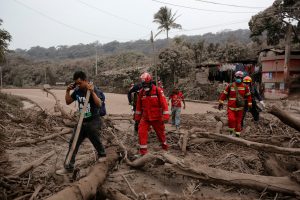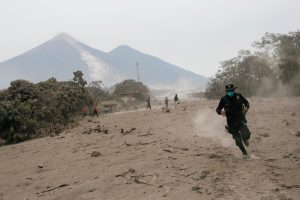
By Hyonhee Shin and Josh Smith
SEOUL (Reuters) – North Korea’s new top three military officers are known for their unquestioning support of leader Kim Jong Un and are flexible enough to accept the massive changes that may come from any deal with U.S. President Donald Trump, people who follow the secretive country say.
They replaced older, more conservative officers who have been recently sacked, according to a senior U.S. official and North Korea leadership analysts in Seoul.
As Washington pursues a negotiated end to Pyongyang’s nuclear program, U.S. officials believe there was some dissent in the military about Kim’s negotiations with South Korea and the United States, a complete reversal of the North’s pursuit of nuclear weapons and historic hostility. It was not clear if the sacked officers were responsible.
Citing an unidentified intelligence official, South Korea’s Yonhap news agency said No Kwang Chol, first vice minister in the defense ministry, had replaced Pak Yong Sik as the defense chief, while Ri Yong Gil had returned as the army’s chief of general staff in place of Ri Myong Su.
The appointments could not be immediately confirmed.
North Korean media had earlier reported that Army General Kim Su Gil had succeeded Kim Jong Gak as director of the army’s powerful General Political Bureau, one of the most senior positions in the country.
The changes are a shock because they take place so close to each other and come just ahead of the scheduled June 12 summit between Trump and Kim in Singapore.
Some analysts said Kim was replacing older officers who were wedded to the country’s nuclear doctrine with loyalists who would follow any changes he may make following the summit.
“There would be a denuclearization roadmap coming out of the summit with Trump, and it would be burdensome for Kim to have hawks who could be agitated by any desertion of the nuclear program,” said Cheong Seong-Chang, a senior fellow at South Korea’s Sejong Institute.
INSURANCE WHILE AWAY
Trump wants North Korea to “denuclearize” in return for relief from economic sanctions. Pyongyang sees its nuclear weapons as vital to its survival but Kim has said he plans to focus on economic development.
The moves are also in line with Kim’s years-long efforts to consolidate power by purging senior officers and promoting trusted younger advisers to the politburo and other core positions.
The new officers could also provide some insurance against any attempt to seize power while Kim is away at the summit, experts say.
“All these guys are Kim Jong Un people,” said Michael Madden, a North Korea leadership expert at Johns Hopkins University’s 38 North website. “Kim Jong Un is going to put people in place he can trust, who are loyal to him.”
In addition to being hardcore loyalists, Madden said the three officers were experienced in dealing with foreigners, which was seen as a plus point. But it was not immediately clear whether any of them would accompany Kim to Singapore.
Kim Su Gil, 68, is a four-star Army general who is one of Kim Jong Un’s most trusted aides, accompanying him on various military inspections and public events.
He was among those involved in the purge and execution of Kim Jong Un’s powerful uncle, Jang Song Thaek, in December 2013. Then he was tapped to lead the party’s Pyongyang chamber in early 2014, a job which Madden said was meant for “housecleaning” the administration of Jang’s confidants.
Kim’s appointment to the General Political Bureau is part of Kim Jong Un’s drive to expand the party’s control over the military, said Ken Gause, director of the International Affairs Group at CNA, a non-profit research and analysis organization based in Arlington, Virginia.
PARTY CREDENTIALS
All of the newly promoted officials are younger than their predecessors, even though they are all in their 60s.
The three were also named in May 2016 as alternate members of the ruling Workers’ Party politburo – the opaque, all-powerful governing body where top state affairs are decided.
Ri Yong Gil served as chief of staff from 2013 to 2016 until he reportedly fell from grace for a brief period, the analysts said.
In the early 2000s, Ri was commander of an Army unit that defends the perimeter around Pyongyang, a sensitive position that Gause said is traditionally “personally selected” by the leader of the country.
In March 2013, he was seen attending a late night meeting convened by Kim to order missile units on “standby” to strike U.S. and South Korean military installations after a U.S. strategic bomber flew over South Korea.
In February 2016, he was briefly demoted to deputy chief and three stars from four for an unspecified reason. South Korean intelligence officials said he had been executed for corruption and abuse of power, only to see him appear at a major party assembly as a politburo candidate three months later.
No Kwang Chol, the 62-year-old relatively less known new defense chief, previously headed the Second Economic Committee, which oversees defense production including the nuclear and missile programs.
“This is where you would send someone you could trust,” said Hong Min, head of North Korea research at the state-run Korea Institute for National Unification in Seoul.
“No is a person who has come to the fore in the Kim Jong Un era, as a up-and-coming and trusted aide. It is not strange at all if he becomes defense minister.”
(Reporting by Hyonhee Shin and Josh Smith; Additional reporting by Jeongmin Kim; Editing by Raju Gopalakrishnan)











